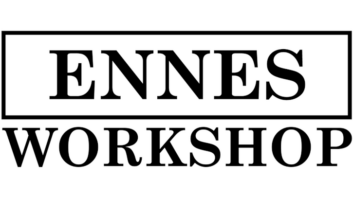
The morning panel featured (from L to R) Sebastian Kett (ARD), Linsday Cornell (BBC), Steve Tomlinson (IMDA), Ralf Hinz (Daimler), and Carsten Friedrich (Frontier Silicon).
BERLIN — The 14th WorldDMB European Automotive Workshop welcomed more than 100 delegates to the Federal Ministry of Transport, Building and Urban Development headquarters here in Berlin.
The event, which took place Nov.14, had three precise goals — to give car manufacturers a timely overview of the state of digital radio and perspectives in each market, to permit the digital radio industry to network with the car industry and for both industries to jointly discuss options for new services to air.
During 2012, significant steps were taken by the automotive sector toward getting digital radio in cars. In-car listening will be a crucial arena for the digital radio game. Car manufacturers have continued to ask broadcasters to provide a sound roadmap of the digital radio rollout in the various area of the world, and up to now, broadcasters have usually answered with “best-effort” statements.
Working group
The breaking news from this conference came from Laurence Harrison, director of Digital Radio UK, when he declared that the country’s government would announce a switchover date in 2013.
“During 2013, our Government will announce the switchover date,” said Harrison. “We launched a conversion working group to make recommendations on how to fully convert all the vehicles to digital at the point of a switchover. This working group will develop annual conversion targets as well as a viable plan to meet them, identify the main barriers to conversion, draft and manage a vehicle conversion risk register, identifying the appropriate mitigations,” he said.
This is the first time a country with a population of more than 60 million has taken such a big step forward. Previously Norway had announced they would switch off FM in 2017, and Denmark did the same, fixing its deadline for 2019. Both Scandinavian countries have a population of circa 5 million.
U.K. digital radio listening is the largest in Europe, and Harrison shared the country’s experience with attendees. “Motorists who pioneered the digital radio age are highly satisfied with digital radio in their car and would recommend to others,” he said. “Most of them listen only to DAB digital radio or listen to it more than to FM/AM radio. Reception and coverage have improved, and most people with a DAB radio in their car say they get consistently good reception.”
Harrison then directed his discussion toward the car manufacturers: “In-car DAB digital radios are perceived to increase the value of a vehicle. And half of in-car DAB digital radio owners in the U.K. said they would be disappointed if digital radio wasn’t available for their next car,” he said. “Digital radio as a selling point is a disruptively new point of view.”
Germany-based car manufacturers were top scorer at the DAB event with registered delegates coming from the VW Group, Daimler (Mercedes), Ford and Hyundai Motor Europe (headquartered in Germany). Attendees also came from French manufacturer Renault. Today, we are seeing many of the major car manufacturers offer DAB/DAB+ as standard in their newer models, and as an option in the majority of the rest of their models, in key markets.
Staying attentive
Carsten Friedrich, automotive marketing manager, Frontier Silicon, focused on the retro-fitting of existing cars: “For almost every car, there is a reasonable offer already available, and more will come soon. In Germany, they will need nearly 12 years to replace all existing, non-digital, car radios merely relying on standard vehicle turnover,” said Friedrich. “We must tell consumers that it is possible to integrate new digital radios in existing cars; the cost and efforts required for such upgrades is reasonable,” he said, especially when dealing with self-fit adaptors or window antennas.
Peter Fuhrmann, CEO of the European Mobile Media Association, made up of luxury car audio installers, explained that there are still some issues to be overcome.
“Window antennas and self-fit adaptors with their cables floating on the dashboard simply don’t fit German consumers,” said Fuhrmann. “They ask for a fully integrated solution, but just replacing the factory fitted antenna with a Band-III capable one would raise the overall cost up to 600 Euros or more.” Even so, he explained that EMMA was open to promote digital radio but that customers need to be aware of installation costs.
“Digital broadcast is key to radio´s future,” said Mats Åkerlund, chairman of the EBU New Radio Group. “EBU believes in a future for radio that is digital, multiplatform and hybrid.” But “the Internet complements broadcast radio, it does not supersede it.”
Hybrid radio was frequently mentioned during the conference as a key factor in promoting digital radio in-car, while maintaining the focus in check: consumers “don’t care about technicalities and standards, they just want it to work” was one of the conclusions of the morning session.
During the event, almost every panelist focused on the end users: “It’s all about the user experience. Get the user experience right, and you win,” said Roger Lanctot, associate director of U.S. consultancy firm Strategy Analytics. “Solve a problem, fulfill a need, and you win.”
Davide Moro reports on the industry for Radio World from Bergamo, Italy.







